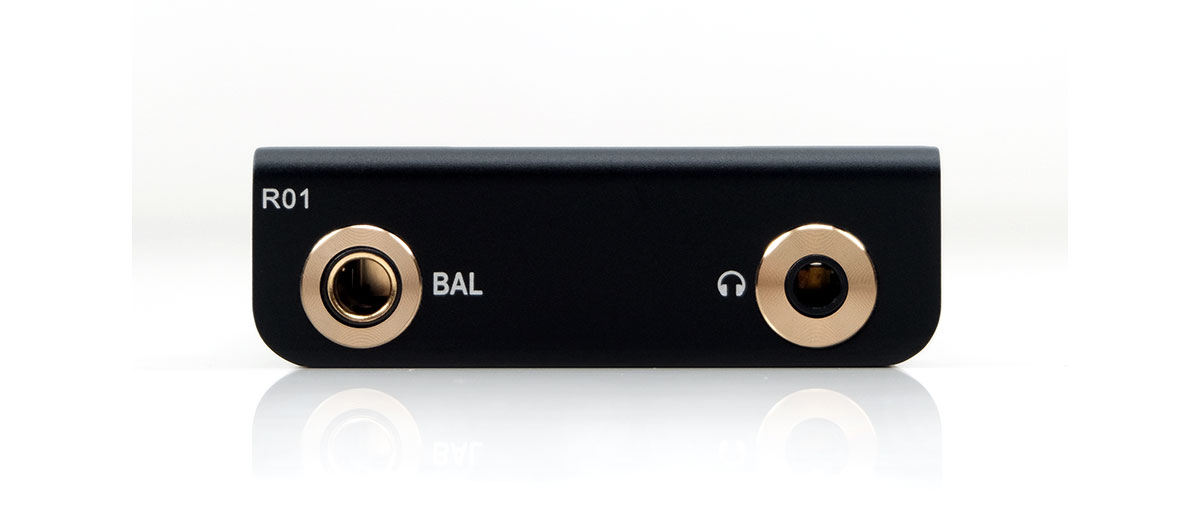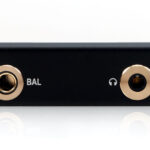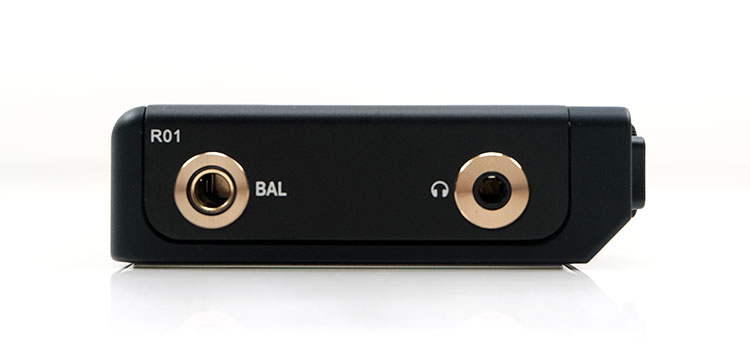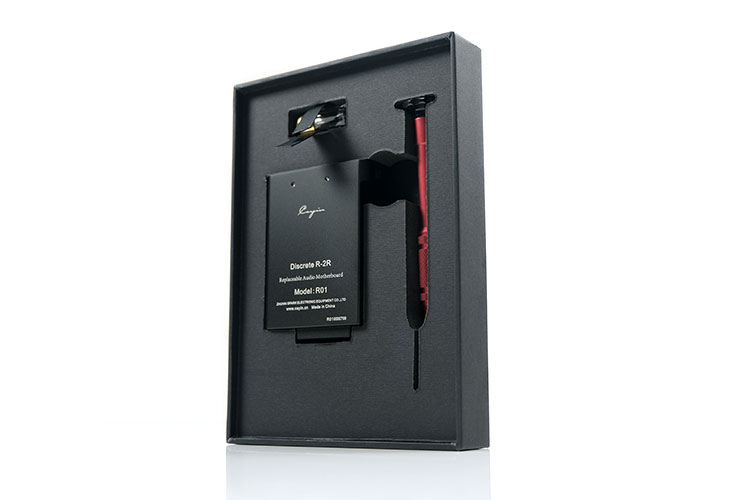Cayin R01 is the first N6ii motherboard to use a 24-Bit Discrete R-2R DAC Resistive Ladder Network with a balanced amplifier. It is priced at $619.
Disclaimer: The Cayin R01 sent to us is a sample in exchange for our honest opinion. We thank Cayin for this opportunity.
To learn more about Cayin products on Headfonics you can click here.
Note, this review follows our new scoring guidelines for 2020 which you can read up on here.
The Cayin N6ii motherboards are back again, the first since the A02 last year in what is proving to be a product line with a very long and welcome shelf life.
This time it is this R01 and Cayin’s first-ever portable R2R implementation and the first viable portable R2R platform (N6ii/R01) that allows users to stream the likes of TIDAL and Qobuz. I believe the production run of this motherboard is limited to something like 1000 units with a fairly hefty price tag of $619.
However, a resistive ladder network in a DAP is the Holy Grail for some audiophiles and the manner of its implementation has never been a cheap and quick process. Especially when we are talking tiny portable PCBs as opposed to larger desktop versions.
To date, only two DAPs currently offer a true R2R experience, the P6 and the P6 Pro from Luxury & Precision, at $2999 and $3899 SRP respectively. The introduction of the R01 means you can now have an Android-based R2R experience for around $1800, making it the most affordable R2R option on the market today.
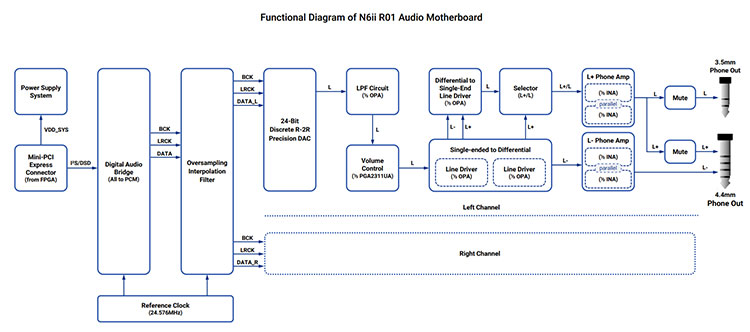
Tech Highlights
R2R
The R01 is entirely different from the previous motherboards as it does not use a delta-sigma or a multibit DAC chipset. Instead, it uses a 24BIT resistor ladder network design in a discrete implementation with a preceding digital bridge for receiving, local reference clocking, and filtering the PCM serial data.
The previous motherboards for the N6ii used either Sabre, Burr-Brown, or AKM chipsets which are primarily delta-sigma. This is traditionally an all-in-one digital decoding solution, a jack-in-the-box design to take a lot of the legwork from a company’s R’n’D budgets and reduce costs.
Both options deliver excellent but different listening experiences but from an engineering angle, going discrete means you are in total control of the implementation.
Parameters for delta-sigma adjustment are usually limited until you get to the analog side where opamps, rollable or otherwise, can take up the slack and introduce whatever flavor you like to the sound.
Discrete
Going discrete in the R01 also means using a lot of tiny resistors all individually mapped out with specific engineering requested processing parameters to convert the digital signal to analog in the exact way they want it to be done.
It is more time-consuming than delta-sigma but the offshoot is generally always a more natural sound that is free of artifacts or ringing, especially in the higher frequencies.
The drawback is that the high number of resistors required to deliver this means a physical challenge in the R01 PCB engineering. Simply put, it’s a lot harder to fit 96 of them (48 per channel) into a typical DAP-sized housing compared to a single delta-sigma chipset.
Not just a random set of 96 resistors either, but 48 per channel with precisely matching parameters (±0.01% high precision), sourced from a company called Viking, (R=5.1kΩ and 2R=10.2kΩ). This is to ensure that at no point in the ladder does any single resistor weaken the entire R01 implementation.

Decoding
The R01 decoding is entirely consistent with the top-performing N6ii motherboards with a maximum of DSD256 and PCM 32BIT/384kHz.
That may not be top-tier for today’s high-end delta-sigma DAP such as the DSD512 capable iBasso DX300 but it is the same headline figure for the flagship P6 and P6 Pro from Luxury & Precision which are also R2R DACs.
Personally, the majority of my files are 16BIT/44.1Khz up to 24BIT/192kHz and DSD64 to DSD128 so the need for higher is not really there. You are unlikely to find too many commercially available recordings at DSD512 either.
In terms of future-proofing, desktop R2R, such as the excellent USB stage and driver set on the Pegasus from Musician Audio is proofed up to 32BIT/1536kHz for PCM and DSD1024 so the capability is there if you can scale your R2R implementation. Consider then the R01 implementation as a portable source compromise much like the Luxury & Precision flagships.
Amplification
The R01 amplification design is a pure PO or headphone amp output with no dedicated line-out feature. Resistors are small but 96 of them inside a small motherboard enclosure does mean some sacrifices in terms of physical space so gone is the LO option.
Instead, we have 4.4mm balanced and 3.5mm single-ended outputs with a circuit design based on the same parallel amplification concept as the A01 to ensure there is a good current supply to both single-ended and balanced outputs.
However, this time we have four TI INA1620 opamps rather than previous OPA1622’s found in the original. The INA1620 integrates 4 precision-matched thin-film resistor pairs with EMI filtering on-chip with a low distortion, high output current, dual audio operational amplifier.
Volume is handled by a dual digitally-controlled analog volume control TI PGA2311UA implementation, one per channel. This is a premium version of the dual PGA2311A control chip used in the T01 motherboard DAP and is different from the purely digital domain controlled A01 motherboard.
Performance Numbers
The amplification output rating of the R01 is about middling at 430mW into a 32Ω load balanced and 240mW single-ended into the same load.
Compared to the other motherboards it is much stronger than the E01’s maximum 150mW rating but slightly weaker than the A01 and T01’s balanced 530mW capability. The E02 balanced output is still the most powerful at 600mW balanced.
Other R2R DAPs do have a higher balanced output capability such as the P6 and P6 Pro at 700mW from a 32Ω but at 180mW into the same load for both flagship LP sources, you do get more power via SE on the R01 at 240mW.
The R01’s SNR is competitive against the likes of the more expensive multibit PCM1704k equipped black R2R2000 from Hifiman with both measuring in at 115dB and quite close to the P6’s for SNR at 0.004% compared to 0.003% using a 32Ω load.
The only area that seems to lag a bit on the R01 is the dynamic range which is at a maximum of 113dB. That is about 3.5dB behind the P6 rating and a further 12dB behind the P6 Pro.
Design
I will keep this section short and sweet since each motherboard has virtually the same physical design and it is not something we will score on this time around. Consistent with the E02 and A02 is the lack of insulation tape over the screws on the back of the R01 motherboard.
This will produce a more ‘jarring’ metal on metal sound when inserting compared to the older A01, T01, and E01 motherboards which had the tape. However, it will prevent possible connection problems as the tape on the original motherboards tended to -roll-up’ and jam the insertion method.
The only other significant design difference is the I/O to the front with the inclusion of a gold-plated 4.4mm balanced and 3.5mm SE PO output system.
Battery Life
The official battery cycle rating for the R01 in combination with the N6ii’s 3.8v 5900mAh li-on battery is 12.5 hours SE and 11 hours balanced which is not too far off the mark in our real-world testing.
Tested conditions to get those official ratings are also quite fair at mid-gain 32Ω for the PO with the screen, WiFi, and BT off. Using a fairly light load JH Audio Contour XO (8Ω) the R01 lasted just over 11 hours for SE and around 10 hours for balanced.
Bear in mind the R01 is operating inside an Android platform on the N6ii so conditions and life cycles can vary greatly depending on your usage conditions such as volume, heavier loads, WiFi, Bluetooth, and heavy tasks running in the background. You will see a drop in those numbers the higher the decoding rate you use also.
Compared to the previous motherboards it is a little bit longer than the average 9.5-hour rating from the E02 and E01 and much better than the T01‘s 8.5 unbalanced and 7.5 hours balanced capability. The best performer to date for PO-capable motherboards is still the A01 at 14 hours unbalanced and 13 hours balanced.
Packaging & Accessories
The packaging for the R01 remains largely unchanged from the previous motherboard offerings.
That means a slimline strengthened black cardboard box with a branded slip-off paper band. Inside you get everything neatly laid out with a colored Torx T5 bit screwdriver and a small ‘pill case’ of 4 additional screws in case you lose one.
These are good Torx screwdrivers by the way and very easy to use. You can apply pressure on the top and twist the main barrel with your hand which makes it so much easier to take the screws in and out.
One other addition is a small user guide and pictorial installation card but previous motherboard users should find no change in how to swap out the cards or install them into the main N6ii player.
Sound Impressions
I have to be careful here when I speak of the ‘R2R sound’. The R01 unmistakably has those much sought-after R01 characteristics with its analog overtones and smooth and refined delivery.
Compared to the previous motherboards, the PO is their most mature and natural-sounding output to date, delivering an entirely ‘new’ N6ii experience.
However, not every R2R DAC sounds the same and that’s a potential misconception I want to dispel right away. After spending most of the last two years listening to the likes of the Musician Audio Pegasus, Holo Audio Spring DAC 2, and the two flagship R2R DAPs from Luxury & Precision you easily pick up on where Cayin has changed direction with the R01.
For a start, the R01 has a weightier sound signature than I was expecting. There is a bit more sub-bass emphasis on the R01 rather than the more relaxed P6 sound signature, for example.
There is also a shade more treble emphasis than I am used to hearing on other R2R implementations. It is relatively nuanced but easier to pick up on after a few hours with the very euphonic and warmer tones of the P6. That gives the R01 a harmonic balance closer to the likes of the P6 Pro but without the P6 Pro’s physicality in the mids and lower treble.
For me, the R01 is a little lighter in the mids and treble compared to the P6 Pro flagship but still quite a sweet and analog-type of sound signature.
You only really notice that subtle forward treble tilt on the R01 when paired with monitors that have a fairly emphasized upper-mids and lower-treble such as the JH Audio Contour XO where vocals have more of a shine and consequently more presence but slightly less body.
Click on page 2 below for pairings, motherboard select source comparisons

